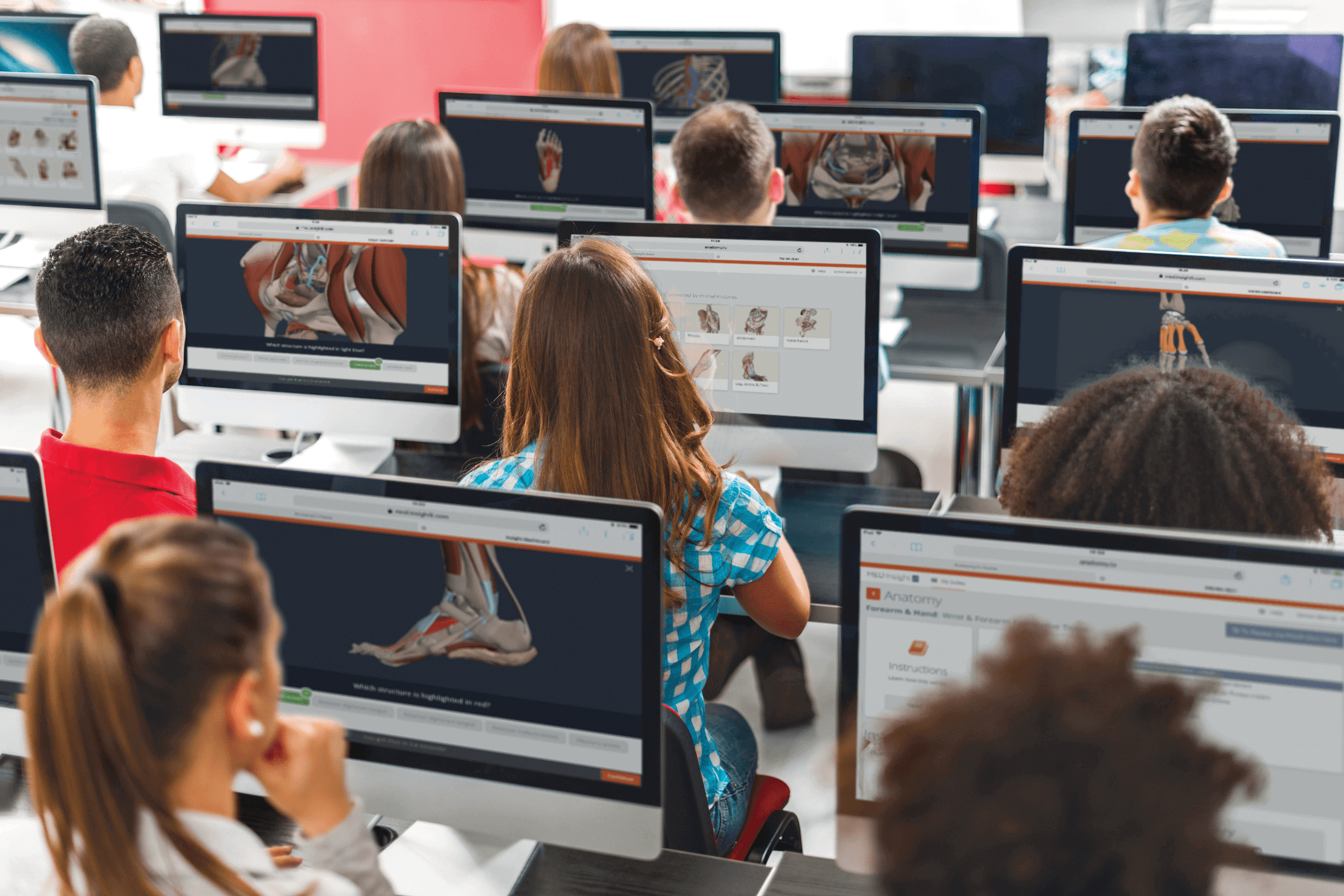Last year, we partnered with The Anatomy Education Podcast, an ‘adventure’ by Professor James Pickering to promote ‘cutting-edge anatomy education’ that explains the complexities of the human body.
Here are three examples from the podcast showcasing the latest in integrating technology in the anatomy curriculum. Each takes a novel approach to solving a very different problem.
Collectively, they highlight what’s on the horizon, and the efforts researchers are making to ensure that advances in pedagogy are backed by evidence-based evaluation.
Transforming Anatomy Education and Training with Extended Reality
Dr Beerend Hierck, Assistant Professor of Anatomy at Leiden University Medical Center (LUMC) says he and his team chose to use augmented reality (AR): “Because you see your fellow students and it’s far more easy to collaboratively learn.” He adds: “And because there needs to be an active component in there, because active learning is so much more efficient than passive learning.”
He and his colleagues developed a Dynamic Reality extended reality (XR) app for the Microsoft HoloLens headset. This features a 3D anatomical model of the lower leg and foot that floats in a fixed space – the middle of a room – as a hologram, meaning that you can walk around it. This is designed to teach students the features of ankle movement, and the muscles and nerves involved.
You can interact with the model using the usual HoloLens hand gestures or voice control. But what’s impressive is that if students wear a motion capture suit, they can also control the movement of the 3D model with their own ankle in real time. “That means that the ankle is theirs; it’s their ankle that they’re discovering,” explains Hierck.
For now, LUMC is using the app for supplementary learning. “While getting experience with this type of education, with producing and using these applications in the curriculum, I think it isn’t very feasible to upscale right away,” says Hierck.
The team is currently conducting extensive evaluation. To date, this indicates that the XR app is especially effective for students with lower spatial ability, particularly in the domain of functional knowledge.
You can download the app free of charge by visiting the Microsoft Store.
Listen to the podcast and find links to further information here
Visualizing Neuroanatomy with Live Drawing Screencasts
“Starting a screencast video with a blank screen does wonders with a student’s learning,” says Dr Scott Border, the driving force behind the popular Soton Brain Hub website and YouTube channel.
One of the criticisms of video as a learning medium is that it’s passive, so users just sit and watch. But Border says that when students are anticipating what’s coming next, they are engaging and thinking about the next link in the chain. “The live drawings do that,” he explains.
As Principal Teaching Fellow in Anatomy within Medicine at the University of Southampton, with a special interest in neuroanatomy, much of what Border draws in his screencasts is conceptual; for example, explaining the motor and sensory pathways.
He integrates his videos into the curriculum alongside lectures and podcasts as part of a three-pronged, blended learning approach. This is designed to let students’ knowledge and understanding guide their learning. So, if they struggle to understand something in a lecture, they can watch the video. If they’re still not getting it, they can listen to the podcast or read a book.
How do students feel about not being spoon-fed everything they need in a lecture? “The overwhelming response is one of support,” he says. “It’s not like these resources are just out on their own. They are linked in to the narrative of what the module is.”
Listen to the podcast and find links to further information here
Delivering an Online Interactive Anatomy Lecture and Lab Experience
What do you do with limited lab space and a waiting list of over 100 students? Faced with this dilemma for one of its undergraduate (bachelor’s level) human anatomy with prosection lab courses, the University of Western Ontario (UWO) created a version to run alongside the campus course.
This featured live-streamed lectures and 3D visualizations, or computer models, for lab sessions all delivered using Blackboard Collaborate software and real-time communication with teaching assistants (TAs). To compare the face-to-face and online experiences, UWO asked student volunteers to try both versions. This revealed that participants who preferred the online version, valued being able to control the pace of lectures.
Dr Stefanie Attardi, who designed, implemented and evaluated the course as part of her PhD at UWO says: “If you’re watching online as a recorded version, you have the ability to pause, look things up, think a little bit and then carry on when you’re ready. And you can also watch it as many times as you need.”
Students were less keen on the virtual prosection lab, and not just because they missed hands-on experience with anatomy specimens. Attardi, who is now Assistant Professor in Histology and Gross Anatomy at Oakland University, William Beaumont School of Medicine, says communication was the biggest issue.
It was a lot easier for them to work with their peers and to ask the TAs questions when they were face-to-face with them… and you both have a specimen in front of you.
Importantly, the choice of format didn’t appear to affect students’ assessment scores or final grades. These were more reliably predicted by students’ incoming grades. “That’s kind of telling us, it doesn’t really matter what format you offer. The students who get 90% or above on most of their courses are going to do what they need to do to get a 90% or above in anatomy,” says Attardi.
Listen to the podcast and find links to further information here
